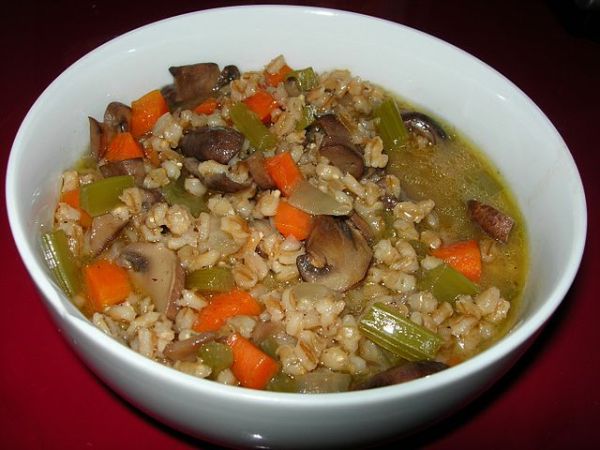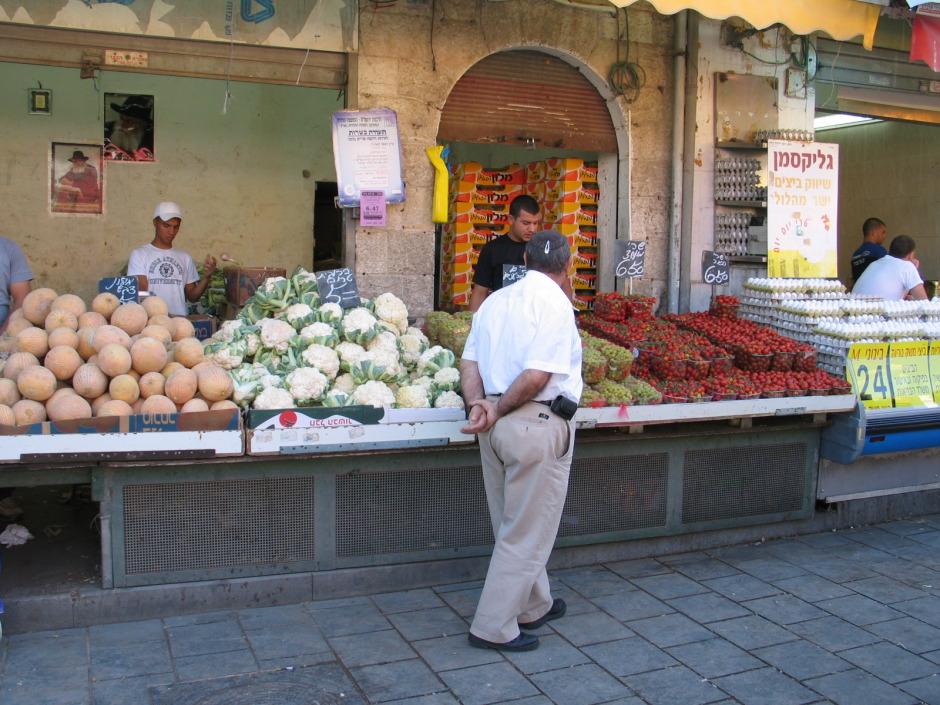Israeli cuisine is a fusion of culinary tastes. Jewish immigrants from Muslim lands brought their traditional, time-honored dishes to Israel, as did Jews from Europe and the rest of the world. Through what Israeli food maven Janna Gur describes as a “process of natural selection,” Israeli society adopted them.

Gur, in Jewish Soul Food: From Minsk to Marrakesh (Schocken Books), presents more than 100 of these recipes in a lavishly-illustrated volume that cements her status as one of Israel’s finest food writers.
She was born in Riga, Latvia, during the communist era, but her ancestors were originally from Romania. Like the vast majority of Jews in the atheistic Soviet Union, she knew scarcely anything about her Jewish background, she recalls in the introduction.
Thanks to her grandmother, who spoke Yiddish, she was introduced to what usually passes for Jewish food in Ashkenazic circles — gefilte fish, pickled herring, chopped liver and so on. Like many a Jewish child, she remembers the live carp swimming around in the family bathtub, awaiting its inevitable fate.
Gur arrived in Israel in 1974, long before most Soviet Jews were allowed to emigrate, and was immediately drawn to the heady aromas of local cooking and the abundance of fresh vegetables and fruits, found in such places as the Carmel market in Tel Aviv and the Mahane Yeduda market in Jerusalem. She gravitated toward food writing, and in 1991, she and her husband, Ilan Gur, founded a Hebrew-language gastronomic magazine, Al Hashulchan, which she still edits.
“Our timing couldn’t have been better,” she writes. “Peace was in the air, the economy was flourishing, and after three decades of austerity, Israelis finally felt entitled to embrace the pleasures of good food. Within a few short years, the local food scene exploded with boutique cheese farms, varietal olive oils, artisanal breads and fine wines. Internationally trained young chefs opened restaurants where they experimented with local ingredients according to the latest vogues.”
Gur was a champion of this trend, judging by her first published volume, The Book of New Israeli Food. Her current book, which crosses continents and cultural borders, taps into the wonderful and eclectic national cuisines that define Israeli food today.
It’s divided into eight parts, beginning with starters, salads and noshes like spicy carrot salad, egg and onion salad and celeriac and carrots in lemon sauce (which my late Bulgarian mother-in-law, Reni Lazarov, would often serve as an appetizer).

From there, Gur moves on to soups like mushroom and barley soup (of which my mother was a master), matzo ball soup and chicken soup, which seems to be everyone’s favourite, especially during cold weather.
Gur’s section on meatballs, fish balls and stuffed vegetables makes the mouth water. Meatballs with sour cherries summon up flavors of Aleppo, peppers stuffed with rice and meat are redolent of Poland, and herbed fish balls with Jerusalem artichokes, tomatoes and saffron seem quintessentially Israeli.
Her foray into braises, pot roasts and ragus, in which she highlights dishes ranging from beef stewed in paprika sauce to chicken with almonds and raisins over red rice, is an advertisement for good old-fashioned comfort food.
When it comes to meatless mains, Gur features such perennials as shakshuka (eggs poached in tomato sauce) and turlu (mixed vegetables casserole).
The chapter on savory pastries is useful as well. She focuses on items running the gamut from banitza (phyllo and cheese pie) and bouikos con kashkaval (mini cheese buns) to lakhoukh (pan-fried flat bread) and adjaruli khachapuri (cheese and egg-filled pie).

Zeroing in on sabbath meals, she turns her attention to classics like cholent, Jerusalem sweet and spicy noodle kugel and kubaneh, or Yemenite slow-baked Shabbat bread.
In closing, Gur lists recipes for cakes, cookies and desserts (plum dumplings and sweet rice pudding, to name but two).
With Jewish Soul Food, she showcases the food traditions of Israel with knowledge, passion and precision, giving readers a handsomely-produced cookbook they can read, re-read and savour.
The Culture Smart! series evens out the playing field for travellers venturing to parts unknown. These pocket-size guides give readers valuable and timely tips about the countries they intend to visit. They deal with issues from local customs to sensitive topics.
There are nearly 100 countries in the series, including Canada, Argentina, Germany, South Africa and Egypt. Now Israel has been added to the list.

Culture Smart! Israel (Random House), written by Jeffrey Geri and Marian Lebor, conforms to the usual format. There are chapters on Land and People, Values and Attitudes, Customs and Traditions, Making Friends, Daily Life, Time Out, Travel, Health and Security, Business Briefing and Communicating.
The information is factual and sensible. If you keep it in mind, you’re not likely to accidentally upset or offend the people you meet in the course of your visit to Israel.
